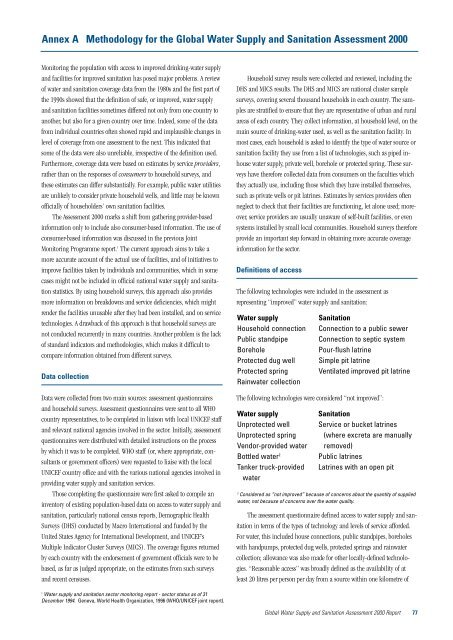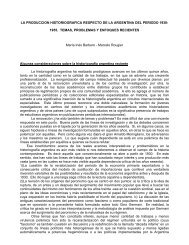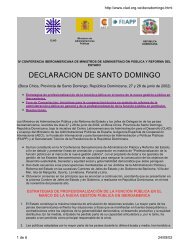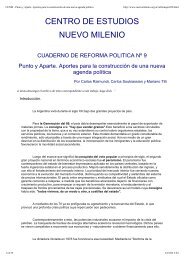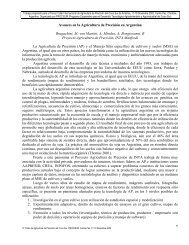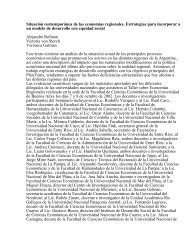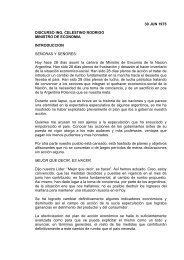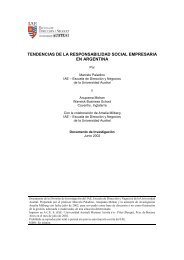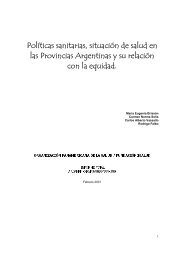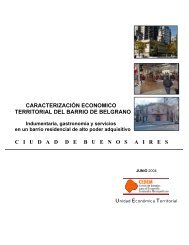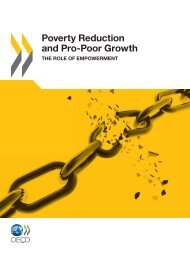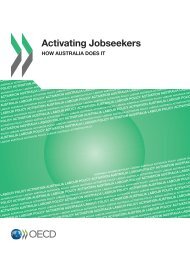Jose Hueb book 11.1
Jose Hueb book 11.1
Jose Hueb book 11.1
You also want an ePaper? Increase the reach of your titles
YUMPU automatically turns print PDFs into web optimized ePapers that Google loves.
Annex A Methodology for the Global Water Supply and Sanitation Assessment 2000<br />
Monitoring the population with access to improved drinking-water supply<br />
and facilities for improved sanitation has posed major problems. A review<br />
of water and sanitation coverage data from the 1980s and the first part of<br />
the 1990s showed that the definition of safe, or improved, water supply<br />
and sanitation facilities sometimes differed not only from one country to<br />
another, but also for a given country over time. Indeed, some of the data<br />
from individual countries often showed rapid and implausible changes in<br />
level of coverage from one assessment to the next. This indicated that<br />
some of the data were also unreliable, irrespective of the definition used.<br />
Furthermore, coverage data were based on estimates by service providers,<br />
rather than on the responses of consumers to household surveys, and<br />
these estimates can differ substantially. For example, public water utilities<br />
are unlikely to consider private household wells, and little may be known<br />
officially of householders’ own sanitation facilities.<br />
The Assessment 2000 marks a shift from gathering provider-based<br />
information only to include also consumer-based information. The use of<br />
consumer-based information was discussed in the previous Joint<br />
Monitoring Programme report. 1 The current approach aims to take a<br />
more accurate account of the actual use of facilities, and of initiatives to<br />
improve facilities taken by individuals and communities, which in some<br />
cases might not be included in official national water supply and sanitation<br />
statistics. By using household surveys, this approach also provides<br />
more information on breakdowns and service deficiencies, which might<br />
render the facilities unusable after they had been installed, and on service<br />
technologies. A drawback of this approach is that household surveys are<br />
not conducted recurrently in many countries. Another problem is the lack<br />
of standard indicators and methodologies, which makes it difficult to<br />
compare information obtained from different surveys.<br />
Data collection<br />
Data were collected from two main sources: assessment questionnaires<br />
and household surveys. Assessment questionnaires were sent to all WHO<br />
country representatives, to be completed in liaison with local UNICEF staff<br />
and relevant national agencies involved in the sector. Initially, assessment<br />
questionnaires were distributed with detailed instructions on the process<br />
by which it was to be completed. WHO staff (or, where appropriate, consultants<br />
or government officers) were requested to liaise with the local<br />
UNICEF country office and with the various national agencies involved in<br />
providing water supply and sanitation services.<br />
Those completing the questionnaire were first asked to compile an<br />
inventory of existing population-based data on access to water supply and<br />
sanitation, particularly national census reports, Demographic Health<br />
Surveys (DHS) conducted by Macro International and funded by the<br />
United States Agency for International Development, and UNICEF’s<br />
Multiple Indicator Cluster Surveys (MICS). The coverage figures returned<br />
by each country with the endorsement of government officials were to be<br />
based, as far as judged appropriate, on the estimates from such surveys<br />
and recent censuses.<br />
1 Water supply and sanitation sector monitoring report - sector status as of 31<br />
December 1994. Geneva, World Health Organization, 1996 (WHO/UNICEF joint report).<br />
Household survey results were collected and reviewed, including the<br />
DHS and MICS results. The DHS and MICS are national cluster sample<br />
surveys, covering several thousand households in each country. The samples<br />
are stratified to ensure that they are representative of urban and rural<br />
areas of each country. They collect information, at household level, on the<br />
main source of drinking-water used, as well as the sanitation facility. In<br />
most cases, each household is asked to identify the type of water source or<br />
sanitation facility they use from a list of technologies, such as piped inhouse<br />
water supply, private well, borehole or protected spring. These surveys<br />
have therefore collected data from consumers on the faculties which<br />
they actually use, including those which they have installed themselves,<br />
such as private wells or pit latrines. Estimates by services providers often<br />
neglect to check that their facilities are functioning, let alone used; moreover,<br />
service providers are usually unaware of self-built facilities, or even<br />
systems installed by small local communities. Household surveys therefore<br />
provide an important step forward in obtaining more accurate coverage<br />
information for the sector.<br />
Definitions of access<br />
The following technologies were included in the assessment as<br />
representing “improved” water supply and sanitation:<br />
Water supply<br />
Household connection<br />
Public standpipe<br />
Borehole<br />
Protected dug well<br />
Protected spring<br />
Rainwater collection<br />
The following technologies were considered “not improved”:<br />
Water supply<br />
Unprotected well<br />
Unprotected spring<br />
Vendor-provided water<br />
Bottled water 2<br />
Tanker truck-provided<br />
water<br />
Sanitation<br />
Connection to a public sewer<br />
Connection to septic system<br />
Pour-flush latrine<br />
Simple pit latrine<br />
Ventilated improved pit latrine<br />
Sanitation<br />
Service or bucket latrines<br />
(where excreta are manually<br />
removed)<br />
Public latrines<br />
Latrines with an open pit<br />
2 Considered as “not improved” because of concerns about the quantity of supplied<br />
water, not because of concerns over the water quality.<br />
The assessment questionnaire defined access to water supply and sanitation<br />
in terms of the types of technology and levels of service afforded.<br />
For water, this included house connections, public standpipes, boreholes<br />
with handpumps, protected dug wells, protected springs and rainwater<br />
collection; allowance was also made for other locally-defined technologies.<br />
“Reasonable access” was broadly defined as the availability of at<br />
least 20 litres per person per day from a source within one kilometre of<br />
Global Water Supply and Sanitation Assessment 2000 Report 77


